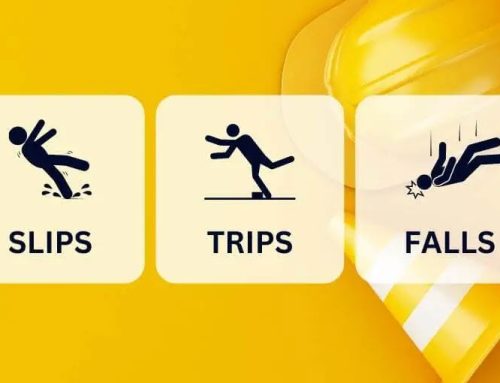Introduction
Manual handling is a crucial aspect of construction work and it covers any activity that requires an individual to lift, move, or hold an object manually. These activities can lead to injuries and as such, it is essential to conduct regular toolbox talks to ensure that workers understand the risks involved and how to mitigate them. In this article, we will discuss how to write an efficient manual handling toolbox talk for construction.
Understanding the Risks Involved
The first step in writing an efficient manual handling toolbox talk for construction is to understand the risks involved. Workers in the construction industry are at high risk of sustaining injuries when performing manual handling tasks. These injuries can range from strains and sprains to more severe injuries such as hernias and fractures.
It is essential to highlight the common manual handling tasks that workers engage in, such as lifting and carrying heavy objects, as well as pushing and pulling heavy loads, and performing repetitive tasks. It is also crucial to discuss the impact of these tasks on workers’ health and well-being and the consequences of not following proper manual handling techniques.
Identifying Best Practices for Manual Handling
The second step is to identify the best practices for manual handling. It is crucial to educate workers on the proper techniques for lifting, carrying and moving objects. Workers should understand how to assess the weight of an object before lifting it and how to use the correct posture when lifting or carrying an object.
Workers should also understand the importance of teamwork when performing manual handling tasks. They should know when to seek assistance and how to communicate effectively with their colleagues to avoid accidents.
Furthermore, it is essential to provide workers with the appropriate personal protective equipment (PPE) to mitigate the risks involved in manual handling tasks. PPE can include gloves, safety shoes, and back support belts, among others.
Demonstrating Proper Techniques
The third step is to demonstrate proper manual handling techniques. The best way to do this is by showing workers how to perform manual handling tasks correctly. This can be achieved through practical demonstrations or videos that illustrate the correct techniques.
It is essential to emphasise the importance of maintaining the correct posture when lifting or carrying an object. Workers should understand how to bend their knees and keep their back straight when lifting an object and how to avoid twisting their back when carrying an object.
Workers should also know how to maintain their grip on an object when lifting or carrying it and how to use their legs to lift the weight of the object rather than their back.
Providing Practical Tips
The fourth step is to provide workers with practical tips for performing manual handling tasks safely. These tips can include:
- Assessing the weight of an object before lifting it.
- Using the correct posture when lifting or carrying an object.
- Avoiding twisting the back when carrying an object.
- Taking breaks when performing repetitive tasks.
- Communicating effectively with colleagues when performing manual handling tasks.
It is also crucial to educate workers on the importance of stretching before and after performing manual handling tasks. Stretching can help prevent injuries by preparing the muscles for the task at hand and preventing muscle fatigue.
Encouraging Discussion
The final step is to encourage discussion among workers. It is essential to create an environment where workers feel comfortable asking questions and discussing their concerns.
Encouraging workers to share their experiences and concerns can help identify areas where additional training may be required. It can also help foster a culture of safety and encourage workers to take ownership of their own safety.
Conclusion
In conclusion, manual handling is a crucial aspect of construction work that requires regular toolbox talks to ensure that workers understand the risks involved and how to mitigate them. Writing an efficient manual handling toolbox talk for construction involves understanding the risks involved, identifying best practices for manual handling, demonstrating proper techniques, providing practical tips, and encouraging discussion among workers.
If you need a provide a toolbox talk related to manual handling, then our Manual Handling Toolbox Talk might be of interest to you.
Alternatively, if you are looking for a range of ready to deliver toolbox talks, then you might be interested in our toolbox talk packages. These include a range of toolbox talks at a cost-effective price.






